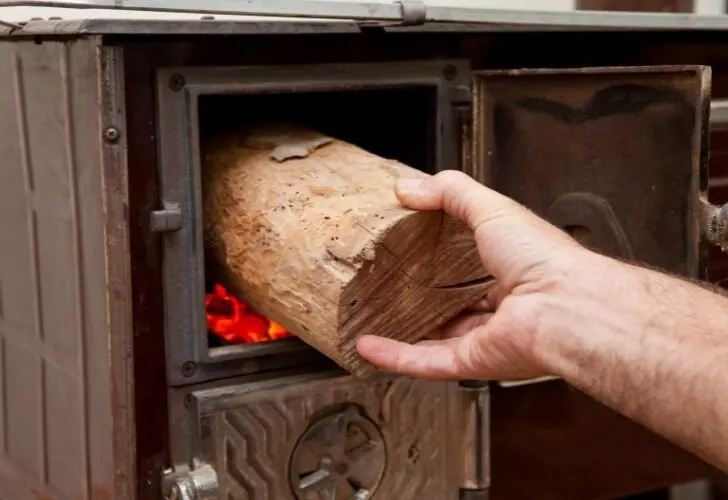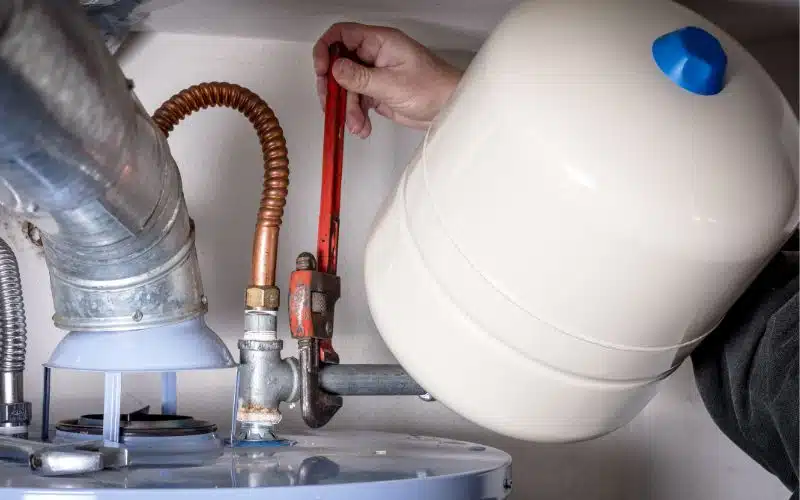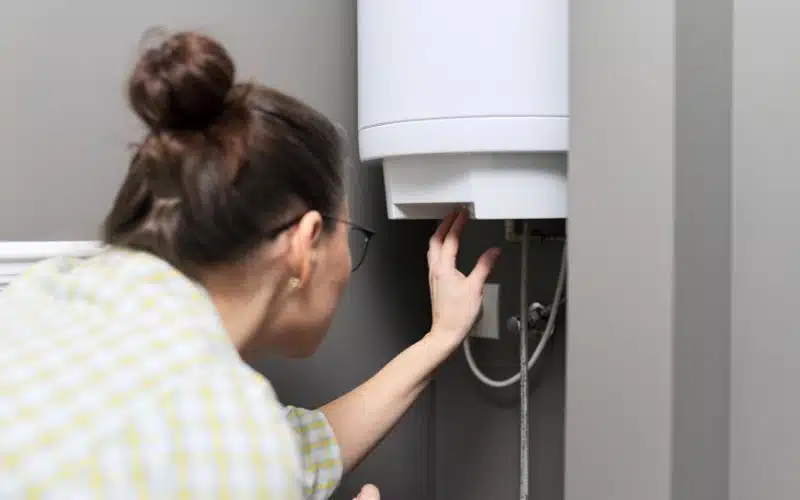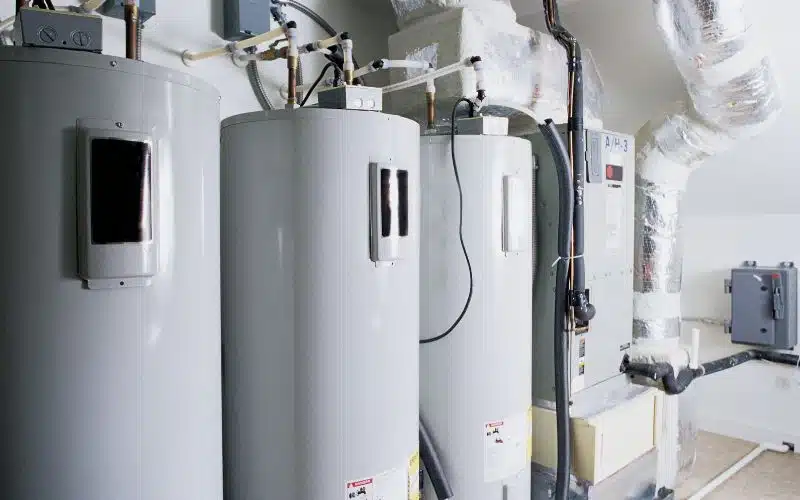Juniper wood is a fragrant wood used to produce high-quality products like furniture. It is one popular choice for building fires in fireplaces because of its pleasant smell.
But recently, whether or not it burns well has suddenly become a question. Not to worry, this article will give deep insights into that.
Although juniper wood has an even heat output, it burns very well and produces little smoke. And because it burns well, most people use it for making fires and smoking meat. The reason is that Juniper wood has an excellent burning ability.
Can You Burn Juniper Wood?

Of course, you can burn juniper wood. It comes in handy for outdoor fires because it burns well and produces little smoke.
The only thing is that you may need to constantly add wood logs to keep the fire ablaze-it burns very fast.
The burning ability of juniper is because of its high concentration of volatile oils, which it emits in the burning process.
As much as you can burn juniper woods, note that they aren’t an excellent choice for long-lasting fires since they consume a lot of wood.
And the reason behind this increased consumption is because they are softwoods, though dense softwood.
Dense softwoods like juniper burn slower than other classes of softwoods. But compared to hardwoods like oak, they burn faster, with a lower temperature.
Hence, I strictly advise you to combine your juniper wood with other types of wood, probably the hard ones, so that the fire will last long.
To your knowledge, there are different species of juniper woods, and their burning ability varies.
While the rocky mountain juniper is quite okay, and its cord produces about 21.78 BTUs, a cord of western juniper generates about 26.4 million BTUs; it is considered the best.
Though the western juniper has a seasoning time of 12 months, it has a high burning capacity. If you compare juniper’s BTU with hardwoods, you’ll find that the gap is not so wide.
While a cord of white oak produces approximately 29.2 million BTUs, a western Juniper generates 26.4 million BTUs so you can see a slight difference.
Altogether juniper woods are combustible. Still, I advise you to keep the wood’s upsides and downsides in mind.
| Upsides | Downsides |
|---|---|
| It is easy to ignite | You will subsequently need more wood logs to keep the fire ablaze |
| It doesn’t produce much smoke | studies have shown that the smoke from it can cause skin irritation or contact dermatitis |
Is It Okay To Burn Juniper In a Fireplace?
It’s seemingly okay to burn juniper in your fireplace. Only that, you’ll need to be constantly adding the wood.
Mostly, it burns neatly and produces a very meager amount of smoke while igniting beautifully. However, note that wet juniper woods produce more smoke than dried ones.
Thus, if you intend to burn any juniper wood, do so with the seasoned one.
Asides from the light smoke, juniper woods produce little creosote; the likely reason for the decreased creosote production is burning occurs at a low temperature.
Yes. Compared to hardwoods, juniper woods burn at a lower temperature. Juniper is also an excellent choice for a fireplace because it has a lovely fragrance that enlists you.
The fragrance combines the scents of pine noodles and juniper berries. Woods that aren’t okay for burning in fireplaces include painted-treated lumber.
As a suggestion, never utilize fire accelerants like kerosene in fireplaces-it’s unsafe for your fireplace to heat up to extreme temperatures.
Is Juniper Wood Toxic?
There is a common misconception that juniper trees are toxic. Juniper woods aren’t toxic in any way; they do not contain natural toxins that cause harm to humans.
Instead, their berries are harmful. The berries of junipers contain oils, which can be harmful- irritating to the skin and mucous membranes.
Juniper woods aren’t toxic, and so is their smoke. Thus, using the woods to smoke your raw foods isn’t a bad idea; and the fact that it’s aromatic makes it more suitable.
Even the smoke from the woods is safe. And as a matter of fact, incense is a product of Juniper woods; asides from incense, there exist many other traditional uses.
Also, juniper trees grow in various climates, like mountainous regions, where they can thrive without much water.
And in such places, the inhabitants use the woods to make natural insecticide because it contains compounds that repel insects and other pests, not humans.
In an aspect of Juniper berries, they can be harmful to the human body. But at the same time, I’m not saying you shouldn’t entirely consume them.
Of course, you can, though in minimal quantity. However, in juniper woods, there’s no harm involved; you can even use them for cooking.
Is Juniper Wood Good For Anything?
There’s no doubt that juniper is good, but it depends on your usage. For example, if you intend to use it as firewood, you need to remember that it burns fast, so you’ll need many logs or pieces, especially if it’s for an extended period.
But aside from firewood, juniper has been a material for medicinal purposes for centuries. For example, it treats respiratory ailments, urinary tract infections, and digestive problems.
And recently, there have been claims that it’s beneficial for improving sleep quality. Additionally, you can distill the sap from juniper trees into an oil that can be a preservative or colorant for food products such as cheese and wine.
Many industries and firms use the wood from Juniper trees for making furniture, not just furniture alone but structures, because it is resistant to decay(rot) and insect manifestation.
Furthermore, it appears to be a naturally treated wood(without chemicals). One may say that the use of juniper wood in furniture production is on the decline; that is entirely proper.
However, the reason for the sudden decline isn’t its quality. Instead, most production industries nowadays replace juniper wood with more modern materials such as plastic.
How Do You Burn Juniper Wood?
The easiest way to burn your juniper wood is using a fireplace. First, you need to set up an opening for excessive smoke escape.
Then, establish a flammable setup made of tinders or newspaper, and arrange a few juniper wood logs on them. After the setup, light fire on the flammable setup and add more juniper wood logs.
Finally, sprinkle some ash when you’re through with utilizing the fire; the fire will diminish.
#1. Setup An Opening for the Escape of Excess Smoke
It would help if you looked for a place around the fireplace where smoke can escape to prevent choking. It could be a pipe or something else.
#2. Establish a Flammable Setup
By flammable setup, I mean any substance that catches fire quickly. It can be pieces of paper, fuel, or any other thing. The flammable setup will serve as a foundation for the fire.
#3. Arrange a Few Juniper Wood Logs on the Flammable Setup
Here, you merely need to put a few pieces of the juniper wood on the flammable setup.
Make sure that juniper logs aren’t too much; depending on the size of the fireplace, three or four will be okay. They should likewise be dehydrated.
#4. Light Up the Flammable Setup and Add More Juniper Logs
You can set the flammable setup ablaze using matches or a lighter. But a match is preferable because you don’t need to go so close.
After lighting, allow the fire to spread naturally and add more logs as desired. Remember to sprinkle some ash or water when you finish using the fire.
Final Thoughts
Juniper wood does burn very well, though, when it’s dry. Also, be conscious that it burns fast, and you’ll need more wood logs. Nevertheless, it has proved an excellent source of firewood.





